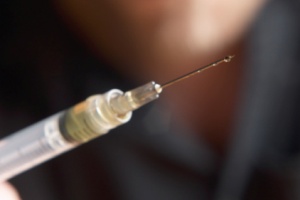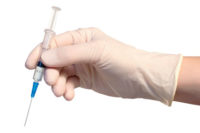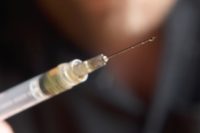 As part of its ongoing mission to eliminate needlestick and sharps injuries in healthcare, Safe in Common (SIC) has issued the "Top 10 Golden Rules of Safety." This set of guidelines was outlined in conjunction with supporters to unify the industry around efforts to fight needlestick injuries and raise awareness about effective prevention techniques.
As part of its ongoing mission to eliminate needlestick and sharps injuries in healthcare, Safe in Common (SIC) has issued the "Top 10 Golden Rules of Safety." This set of guidelines was outlined in conjunction with supporters to unify the industry around efforts to fight needlestick injuries and raise awareness about effective prevention techniques.
A "never" event
The list is predicated on making injuries a "never" event and dictates that personnel using or purchasing sharps consider the following rules:
- The design and activation of the safety mechanism is automatic and will not interfere with normal operating procedures and processes
- The device is intuitive and requires no additional steps for use than equivalent standard/conventional device
- The contaminated, non-sterile sharp will be rendered safe prior to removal or exposure to the environment
- Activation of the safety mechanism does not require the healthcare worker to undertake any additional steps during normal process/protocols providing patient care
- Activation of the safety mechanism will not create additional occupational hazards (such as aerosolization, splatter, exposure to OPIM, etc.)
- Activation of the safety mechanism does not cause additional discomfort or harm to the patient
- The device will be ergonomically designed for comfort, allowing for automatic one-handed use during all stages of patient procedure
- The safer engineering control is available in sizes and iterations appropriate for all areas of use relevant to the patient care needs
- Disposal of safety device will not increase waste disposal volumes but should incorporate designs to reduce waste
- The used safety device will provide convenient disposal and mitigate any risk of reuse or re-exposure of the non-sterile sharp
"For the first time, the most experienced healthcare leaders have joined together to outline the rules for what it takes to keep all healthcare personnel safe and free of injury," said Barbara DeBaun, RN, MSN, CIC and Improvement Advisor for Cynosure HealthCare environments, who helped advise Safe in Common on these guidelines. "With these rules, we're getting the industry thinking about where we are and where we need to go to make safety a priority and injuries a never event."
To test the degree to which safety engineering controls have evolved, SIC evaluated whether the sharps devices on display at the conference were safe, simple and secure as outlined in the Golden Rules standards.
"Hand washing, surface disinfectant and devices designed to identify and eradicate bugs are prevalent, but there is lack of attention on devices aimed at healthcare worker safety and patient safety needs to prevent sharps injuries," said Safe in Common Chairperson Mary Foley, PhD, RN. "It was disappointing that so few safety devices have emerged that protect the patient and healthcare worker before, during
The "Top 10 Golden Rules" were also shared with some 800 healthcare leaders and personnel from across the globe who joined Safe in Common's panel of experts for "The Unfinished Agenda: When Will Healthcare Worker Sharps Injuries Become a Never Event?"
For more information about Safe in Common and the Organization's ongoing work to raise awareness of needlestick safety and promote utilizing safer engineering controls that protect healthcare workers from unnecessary needlestick- and sharps-related injuries, please visit http://www.safeincommon.org.
About Safe in Common
Safe in Common is a non-profit organization established to enhance and save the lives of U.S. healthcare personnel at risk of harm from needlestick injuries. It is led by Chairperson Mary Foley, PhD, RN, former President of the American Nursing Association and other industry leaders. To learn more about the Needlestick Safety Pledge and its goal of promoting and strengthening the Federal Needlestick Safety and Prevention Act, go to www.facebook.com/safeincommonand follow Safe in Common on Twitter at www.twitter.com/safeincommon.



